
“Abwaschskulptur (Dishwashing Sculpture) #2,” (2013). Kitchenware, plinth. 63.7 x 27.5 x 21.6 inches. Courtesy the artist, and Tanya Bonakdar Gallery, New York and Herald St, London.
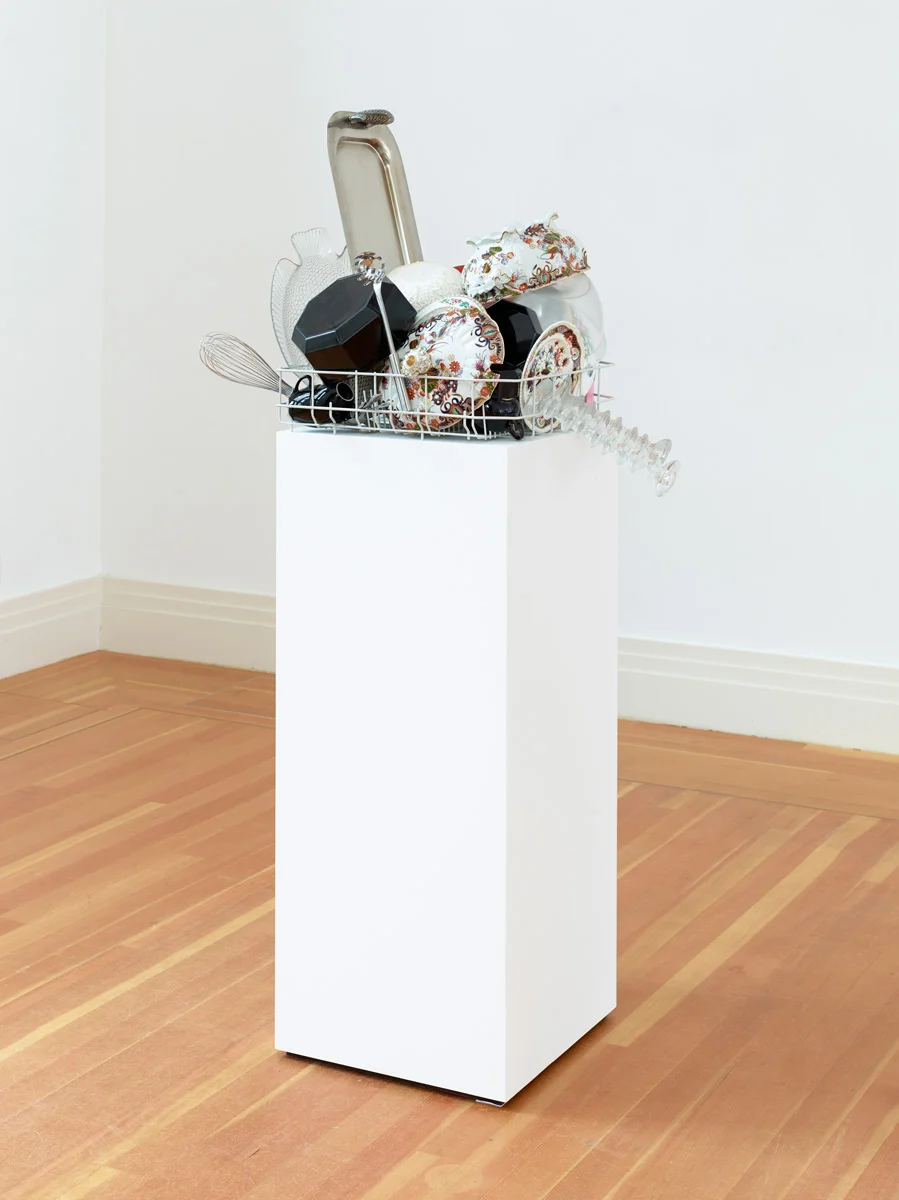
“Abwaschskulptur (Dishwashing Sculpture) #2,” (2013). Kitchenware, plinth. 63.7 x 27.5 x 21.6 inches. Courtesy the artist, and Tanya Bonakdar Gallery, New York and Herald St, London.
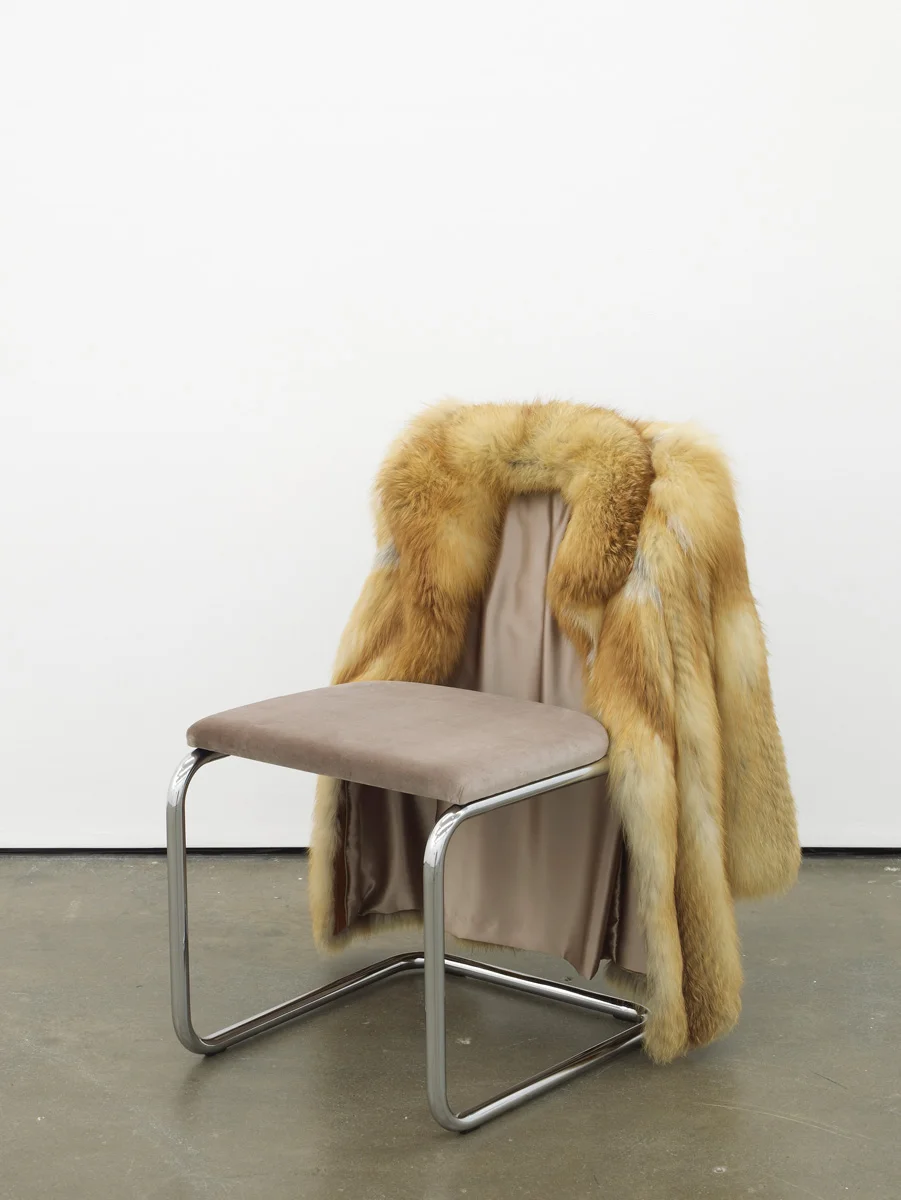
“Untitled Chair – FXR-0,” (2014). Arctic fox (red), steel tubing, upholstery, silk, and velvet. 33.4 x 25.5 x 23.6 inches. Courtesy the artist, Tanya Bonakdar Gallery, New York, and Herald St, London.

“Untitled Chair – AL-0,” (2015). Vintage fur, steel tubing, upholstery, silk, and velvet. 33.4 x 25.5 x 23.6 inches. Courtesy the artist, and Tanya Bonakdar Gallery, New York and Herald St, London.

“Sequence 1,” (2015). Painted ceramics. 11.3 x 12.4 x 0.5 inches. Courtesy the artist, and Tanya Bonakdar Gallery, New York and Herald St, London.
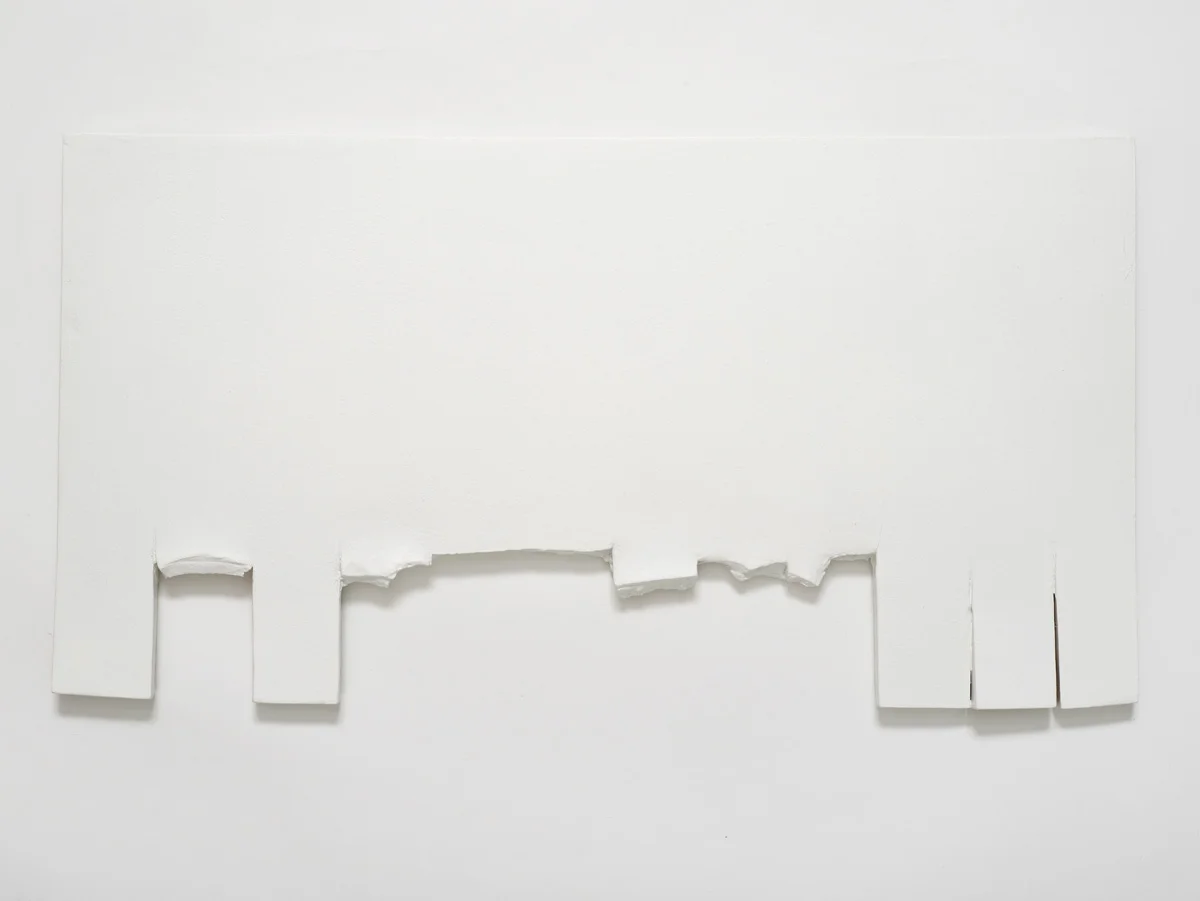
“Sequence 1,” (2015). Painted ceramics. 11.3 x 12.4 x 0.5 inches. Courtesy the artist, and Tanya Bonakdar Gallery, New York and Herald St, London.
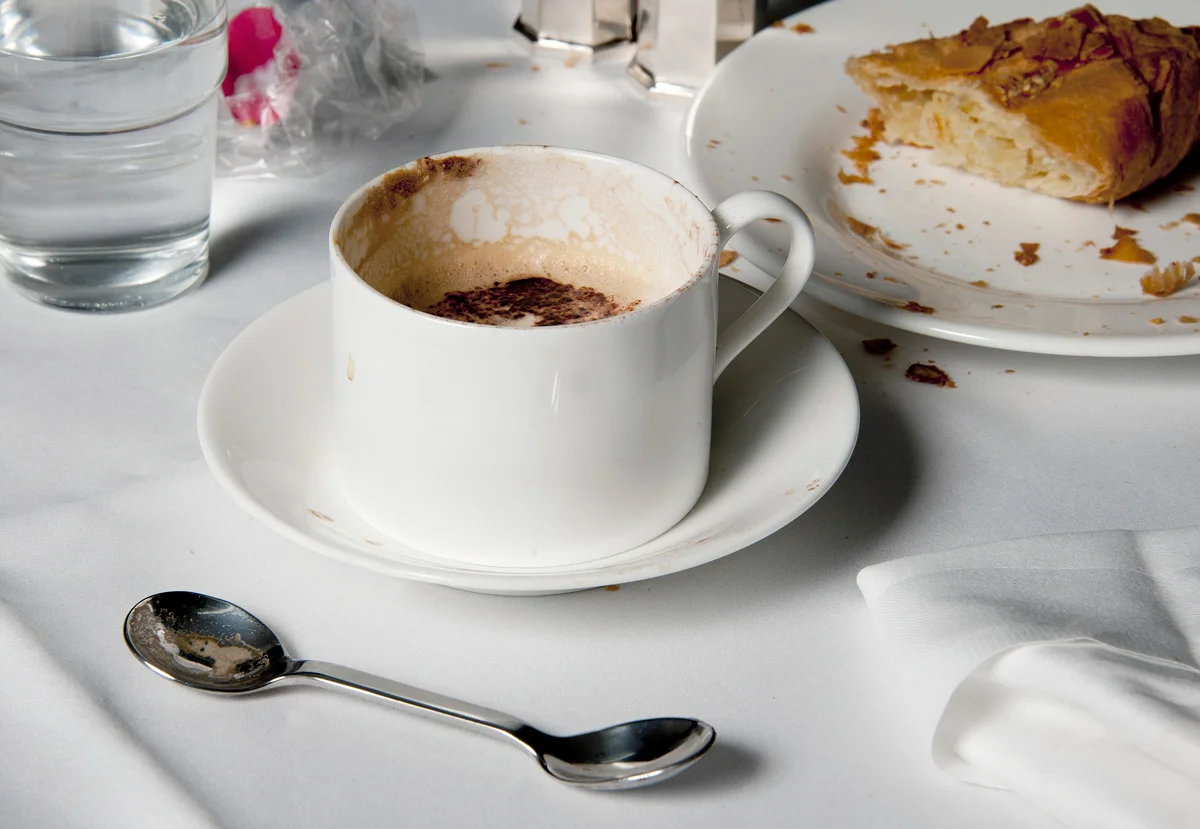
“Manners,” (2013). Site-specific sculpture commission, Tate Britain. Courtesy the artist, and Tanya Bonakdar Gallery, New York and Herald St, London.
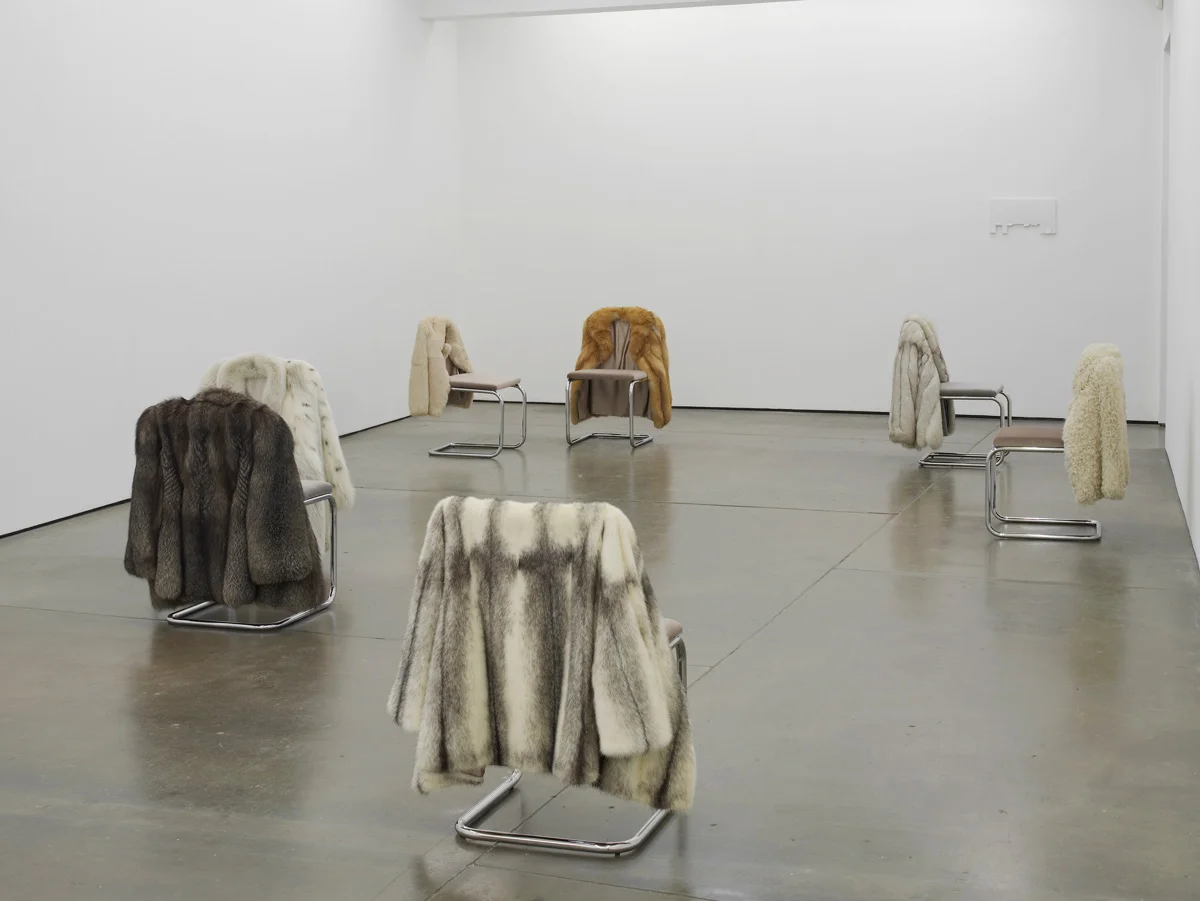
“Manners,” (2013). Site-specific sculpture commission, Tate Britain. Courtesy the artist, and Tanya Bonakdar Gallery, New York and Herald St, London.
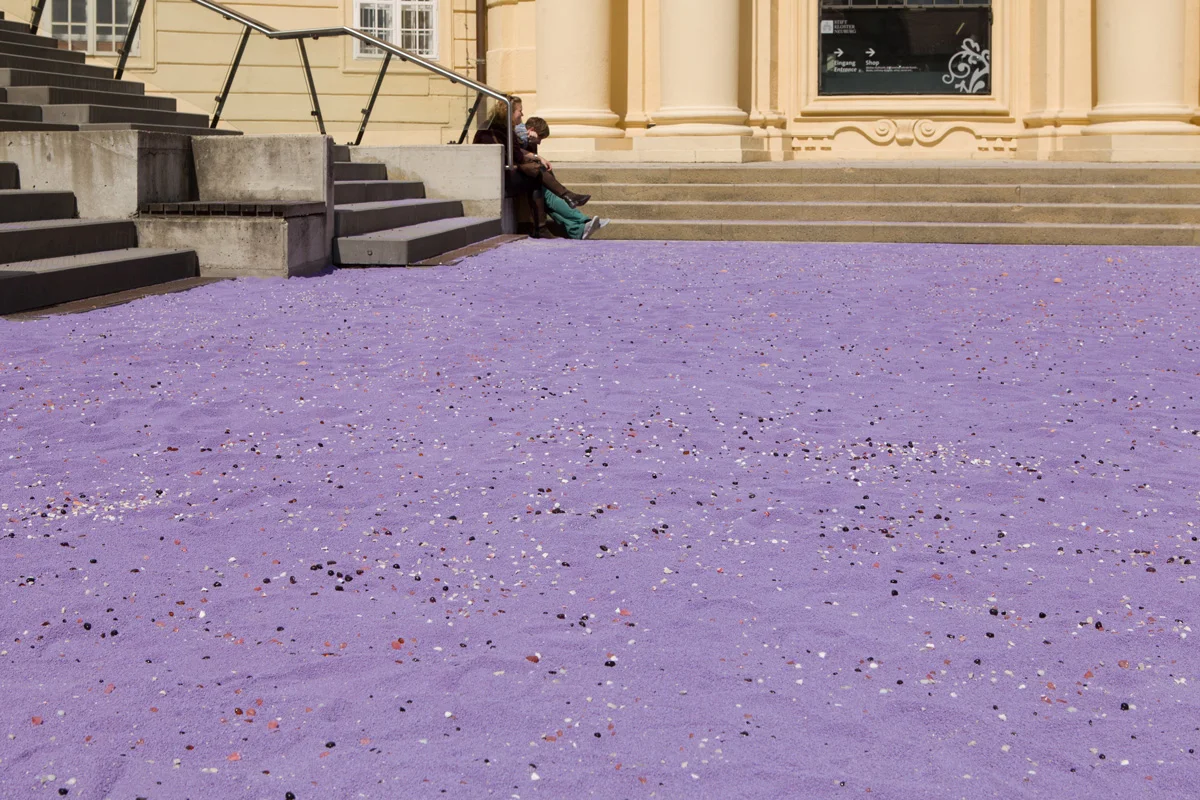
“Exhibition View of Mischung (mixture) at the Stift Klosterneuburg, Vienna,” (2014). Purple sand, glass granules, stones. Ca. 400 M2. Courtesy the artist, and Tanya Bonakdar Gallery, New York and Herald St, London.

“Exhibition View of Mischung (mixture) at the Stift Klosterneuburg, Vienna,” (2014). Purple sand, glass granules, stones. Ca. 400 M2. Courtesy the artist, and Tanya Bonakdar Gallery, New York and Herald St, London.
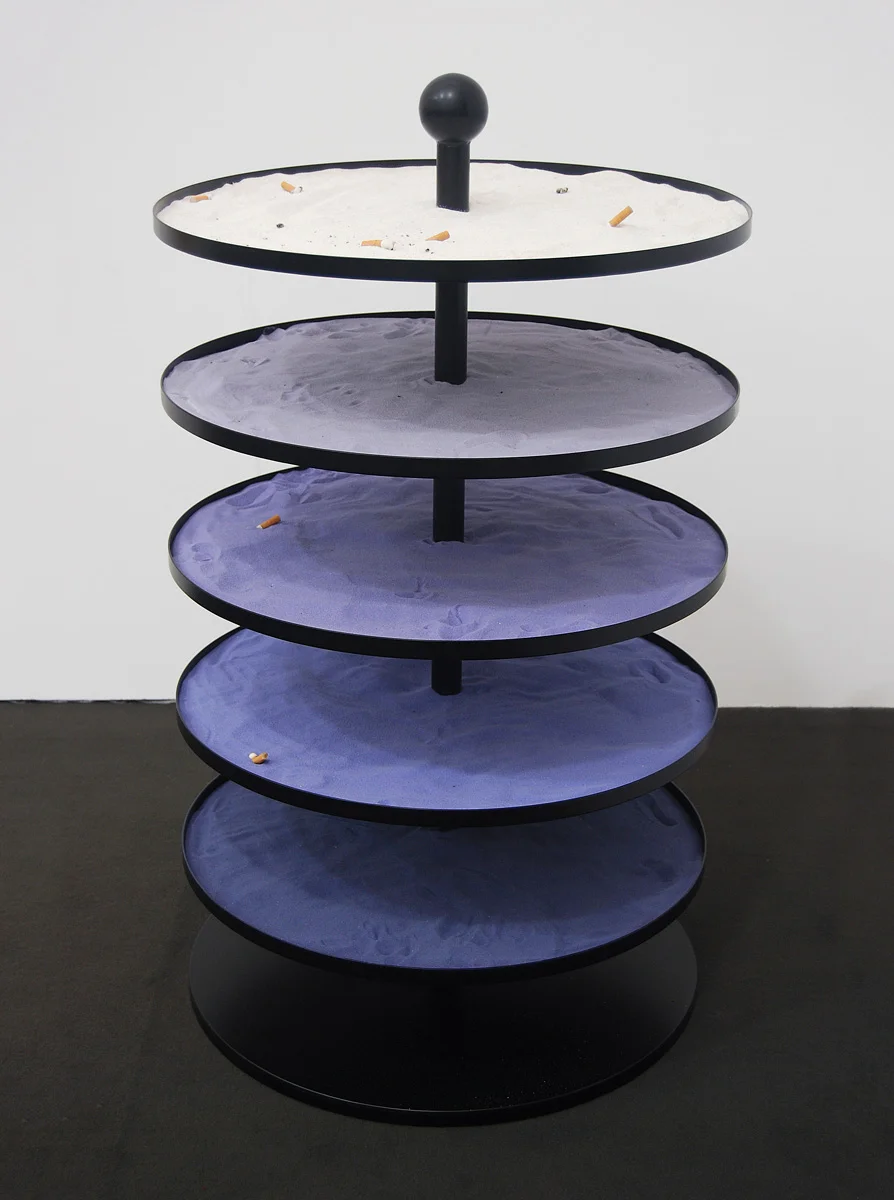
“Untitled ashtray (purple blue),” (2010). Powder-coated steel, sand, pigment, cigarette butts, cigarette wrapper. 40 1/8 x 23 5/8 x 23 5/8 inches. Courtesy the artist, and Tanya Bonakdar Gallery, New York and Herald St, London.

“Untitled ashtray (purple blue),” (2010). Powder-coated steel, sand, pigment, cigarette butts, cigarette wrapper. 40 1/8 x 23 5/8 x 23 5/8 inches. Courtesy the artist, and Tanya Bonakdar Gallery, New York and Herald St, London.
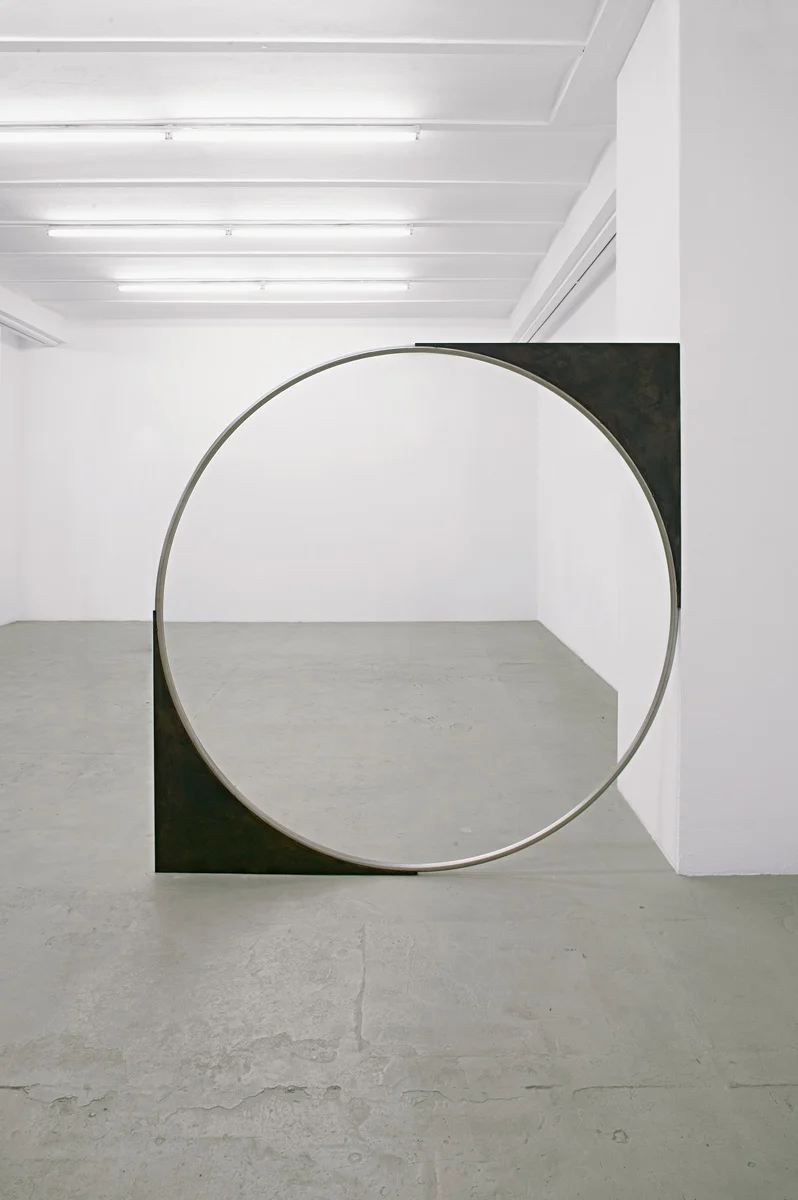
“Untitled Forcefield,” (2007). Stainless steel, treated mild steel. 84 5/8 x 84 5/8 x 1 3/8 inches. Courtesy the artist, and Tanya Bonakdar Gallery, New York and Herald St, London.
[](#)[](#)
Nicole Wermers
They’re Just Now Getting Into That
A fur jacket hangs on the back of a chair in an empty room; all around it hang coats in a similar state, left behind to keep the place of their humans. Fur was once a symbol of one’s prowess, the ability to slay a foe, and to take its assets as your own, to keep warm against the cold night, and then, as plant fibers were more easily cultivated and molded—a different symbol of power, a sign of one’s ability to accrue and spend capital through work, privilege, or sex.
The tidy work of Nicole Wermers—the German-born, London-residing nominee for this year’s Turner Prize—comes loaded with almost-Jungian symbolism. Wermers seems to delight in taking her audience down an information hole with something as simple as “Manners,” a teaspoon with a double bowl at either end of the handle, designed for the Tate Britain Café and members room. “The bowls are subtly different in size and design and reflect the shape of spoon bowls over different periods of modernity,” she says. “Twentieth century art, which forms a large part of the Tate’s collection, has a strong connection with cafés and their bohemian culture and rituals. The spoon is at the center of that ritual, being the tool to mix together your drink.
“In deliberate contrast to the 1920s ambient mural commissioned for Tate’s Whistler restaurant, ‘Manners’ is nearly invisible, yet most visitors to the Café will come into close and even physical contact with the work, which in a way takes the idea of ‘Kunst am Bau\*’ ad absurdum.”
The spoons were subsequently pilfered en masse by thirsty museumgoers. I ask Wermers if she is secretly happy about it; “The Tate had originally asked me to produce an edition of the spoons to sell in the shop alongside my project for the café,” she says, “which I declined because I actually quite like the idea that the only way you can possess one of them, is to steal it.”
“I am interested in how physical infrastructures determine social ones (and vice versa), in the structures of ritualized social relations,” Wermers explains in response to a question on the title Infrastruktur for the fur coat on chair exhibition at Herald St Gallery, “\[the sculptures\] take an everyday ritual performed in cafés and restaurants as a starting point: the placing of one’s jacket around the back of a chair in a public place. We do this to personalize the chair, to declare a piece of public space as our own. I wanted this normally temporary occurrence to be an integral and permanent element of the ‘Untitled’ chairs and the coats to be non-detachable from the rest of the structure.”
Although Wermers has a Germanic soul, her clean lines and polished consumerist aesthetic are entirely of 21st century London. Wermers first came to London to study at Central Saint Martins and claims she “was always quite anglophile and interested in the music and literature coming out of Britain.”
“However,” she continues, “what made me stay in London was the fabric of the city; its unique mix of cultures and people, the quick pace and historical layers, the close proximity of housing estates and wealthy properties, of high and pop culture and its amazing museums.”
Recently, London’s Poverty Profile reported “incomes in London are more unequal than in any other region with 16% of the population in the poorest tenth nationally and 17% in the richest tenth. The South East comes a distant second, with almost as many in the richest tenth (15%) but only half as many in the poorest tenth (8%).”\*\*
Given this, it’s not unwarranted to conclude Wermer’s sculptures, with their aloof shininess, speak to the more privileged of that economic teeter-totter, but the illusion reveals itself in the details, “I don’t use consumer design principles as such.” She says, referencing a piece called “Wasserregal (Water Shelf)” from 2011-12, “I use visual triggers that condition us to react in a certain way but I decontextualize them. I use object categories but renegotiate their function, like the ‘Wasserregal’ series, containing water but not being used for anything else.”
And just like that, the spoon has two ends.
##### _\* German expression for a specific program of art for public buildings usually associated with large steel structures in front of municipal buildings._
##### _\*\*From London’s Poverty Profile, courtesy Trust for London and the New Policy Institute._
